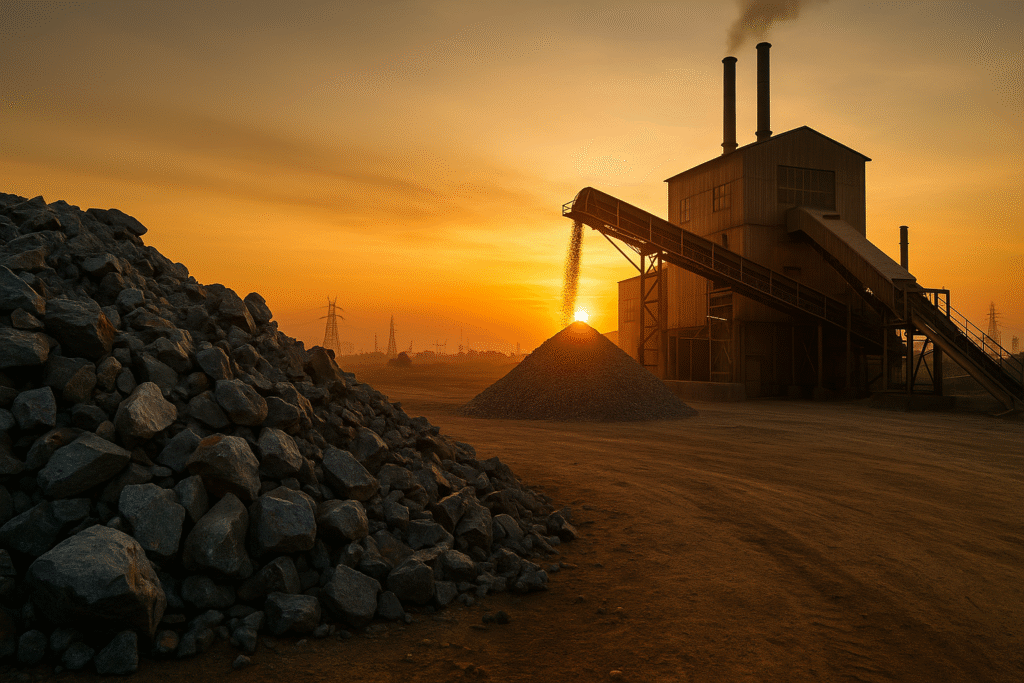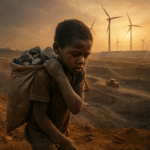Africa holds the minerals the world needs. The real question is: can the continent hold the value, too?
A continent at the centre of the green revolution
From cobalt in the Democratic Republic of Congo to lithium in Zimbabwe, manganese in South Africa, and rare earth elements across East Africa, the continent is now at the epicentre of the global energy transition. Critical minerals are the backbone of clean energy technologies, batteries, wind turbines, solar panels, and electric vehicles.
The stakes are clear: without Africa’s resources, the world’s climate ambitions stall. Yet the bigger question is whether Africa will continue to play the role it has for centuries, supplying raw materials to the world at bargain prices, or whether it can leverage this moment to industrialise, create jobs, and retain more value at home.
Recently, the African Union (AU) moved to answer that question. Reports confirm that the AU is spearheading a coalition of African states to assert greater control over mineral value chains and prevent a repeat of past extractive models. At the same time, philanthropist Mo Ibrahim has called for a strategy to “unlock Africa’s green riches,” turning geology into genuine prosperity rather than dependency.
The momentum is real. But so are the risks.
The extractivist trap: lessons from history
Africa has been here before. From the gold and diamond trade of the colonial era to the oil and copper booms of the 20th century, resource abundance has rarely translated into broad-based development. Instead, much of the value was exported, while domestic economies remained undercapitalised and vulnerable to price swings.
The pattern is familiar:
- Raw materials leave the continent in bulk.
- Processing and refining happen abroad.
- High-value products are imported back at a premium.
This “dig, ship, repeat” model has trapped Africa in cycles of dependency. Unless governance structures change, critical minerals risk becoming the “new oil” curse, a resource that enriches a few while leaving societies exposed to environmental harm and economic volatility.
A bold African bid: the AU coalition
The AU’s coalition on critical minerals seeks to disrupt this pattern. By coordinating policy across countries, the bloc aims to:
- Align licensing regimes to prevent harmful competition between states.
- Promote regional processing hubs to capture more of the value chain domestically.
- Leverage collective bargaining with global buyers like the EU, the U.S., and China.
If successful, the coalition could help Africa set its own terms, rather than accepting fragmented, country-by-country deals. But success will depend on overcoming political divisions, strengthening institutions, and resisting pressure from powerful external actors.
The global scramble: Africa in the crosshairs
The urgency comes from outside as much as within.
- China already controls much of the global processing and refining market, especially for cobalt and rare earths. African minerals often flow first to Chinese refineries before being integrated into global supply chains.
- The European Union has adopted its Critical Raw Materials Act, explicitly naming Africa as a partner but prioritising supply security for Europe.
- The United States has passed the Inflation Reduction Act, linking critical mineral access to subsidies for clean energy manufacturing.
All three powers are now actively courting African governments, offering infrastructure, security deals, and financing in exchange for access. For Africa, the challenge is to turn competition into leverage without surrendering sovereignty.
Unlocking green riches: Mo Ibrahim’s challenge
In his recent intervention, Mo Ibrahim put it bluntly: “Africa cannot afford to be the quarry of the green transition.” He argued that the continent’s mineral wealth must be monetised in ways that build industrial capacity, create decent jobs, and strengthen governance.
His proposals include:
- Public-private partnerships to finance local processing plants.
- Transparent contracts that ensure communities benefit from revenues.
- Continental frameworks to avoid a race to the bottom between countries.
These ideas echo the African Mining Vision, adopted in 2009, which called for integrated and transparent mineral development. But execution has lagged. The renewed focus on critical minerals may be the chance to revive that agenda with urgency.
The governance dilemma
Mineral wealth is only transformative if governance is strong. Yet in many countries, governance gaps persist:
- Weak regulatory capacity: Ministries of mining and energy often lack resources to enforce environmental or labour standards.
- Stabilisation clauses: Many contracts lock governments into decades-long terms, preventing tax reforms or stronger regulations.
- Community exclusion: Women and local communities are frequently left out of decision-making, even though they bear the brunt of mining impacts.
These issues are not abstract. Reports from the Guardian and others highlight how financing for critical mineral mining has already contributed to deforestation, biodiversity loss, and human rights abuses, with women and children disproportionately affected.
If Africa is to capture value without repeating mistakes, governance reform must be central.
Building value chains at home
So what would capturing more value actually look like?
- Processing and refining: Instead of exporting raw cobalt, Africa could develop refineries to produce battery-grade cobalt sulphate.
- Component manufacturing: With the right incentives, African countries could host plants producing cathodes, anodes, or even full battery packs.
- Renewable integration: Using minerals domestically to build Africa’s own solar and wind infrastructure, rather than exporting them exclusively for foreign supply chains.
Examples already exist. Morocco is building a thriving renewable industry anchored in phosphate-based batteries. South Africa has long-standing platinum group metals expertise. Zimbabwe is piloting lithium processing facilities.
Scaling these efforts will require coordinated investment, infrastructure upgrades, and technical skills development.
The risks of going it alone
Individual states acting alone risk falling into familiar traps. Investors often play countries against each other, extracting concessions in exchange for investment. Without regional coordination, Africa risks undercutting itself.
That is why the AU coalition is significant. By negotiating as a bloc, Africa can pursue minimum beneficiation standards, ensure fairer revenue-sharing, and prevent a destructive race to the bottom.
Still, collective action is hard. National politics, security concerns, and corruption all pose barriers. The coalition will need clear governance rules and strong political will.
The justice dimension
Critical minerals are not just an economic issue. They are also about justice. Communities living near mines often suffer displacement, water pollution, and loss of livelihoods. Women in particular carry the costs of environmental degradation and informal labour in artisanal mining.
If Africa’s critical minerals strategy fails to address these realities, it will replicate rather than resolve injustices. A just value chain must include:
- Community consent mechanisms.
- Gender-responsive policies.
- Revenue-sharing frameworks that prioritise local development.
Without these, industrialisation risks becoming another elite project disconnected from people’s lives.
Choices that define the future
The world is watching Africa. The continent holds the keys to the clean energy future. But minerals alone are not destiny. Choices made now will determine whether Africa builds resilient, diversified economies or slips into another cycle of extractivism.
The AU coalition, Mo Ibrahim’s call, and civil society’s growing voice provide momentum. The challenge is execution. Can African leaders resist short-term rents in favour of long-term transformation? Can governance institutions deliver accountability? Can communities be partners rather than victims?
Conclusion: critical minerals, critical moment
Africa’s bid to control the green value chain is both urgent and overdue. The opportunities are real: billions in investment, industrial upgrading, and a chance to rewrite the rules of global trade. But so are the risks: stranded assets, environmental harm, and a new resource curse.
The continent stands at a crossroads. As the world rushes toward net zero, Africa must decide whether to remain a supplier of raw materials or to seize this moment to industrialise, innovate, and build prosperity on its own terms.
Critical minerals present a once-in-a-generation chance. The question is whether Africa will take it.
Follow Energy Transition Africa for more updates:
![]()
![]()
Vincent Egoro is a leading African voice on the just energy transition, fossil fuel phaseout and critical minerals governance. With over a decade of regional advocacy experience, he works at the intersection of transparency, accountability and sustainability, advancing community-driven solutions that put Africa at the heart of global climate action.




Pingback: Responsible Minerals Finance: Bridging the Gap Between Theory and African Practice - Energy Transition Africa Responsible Minerals Finance: Bridging the Gap Between Theory and African Practice